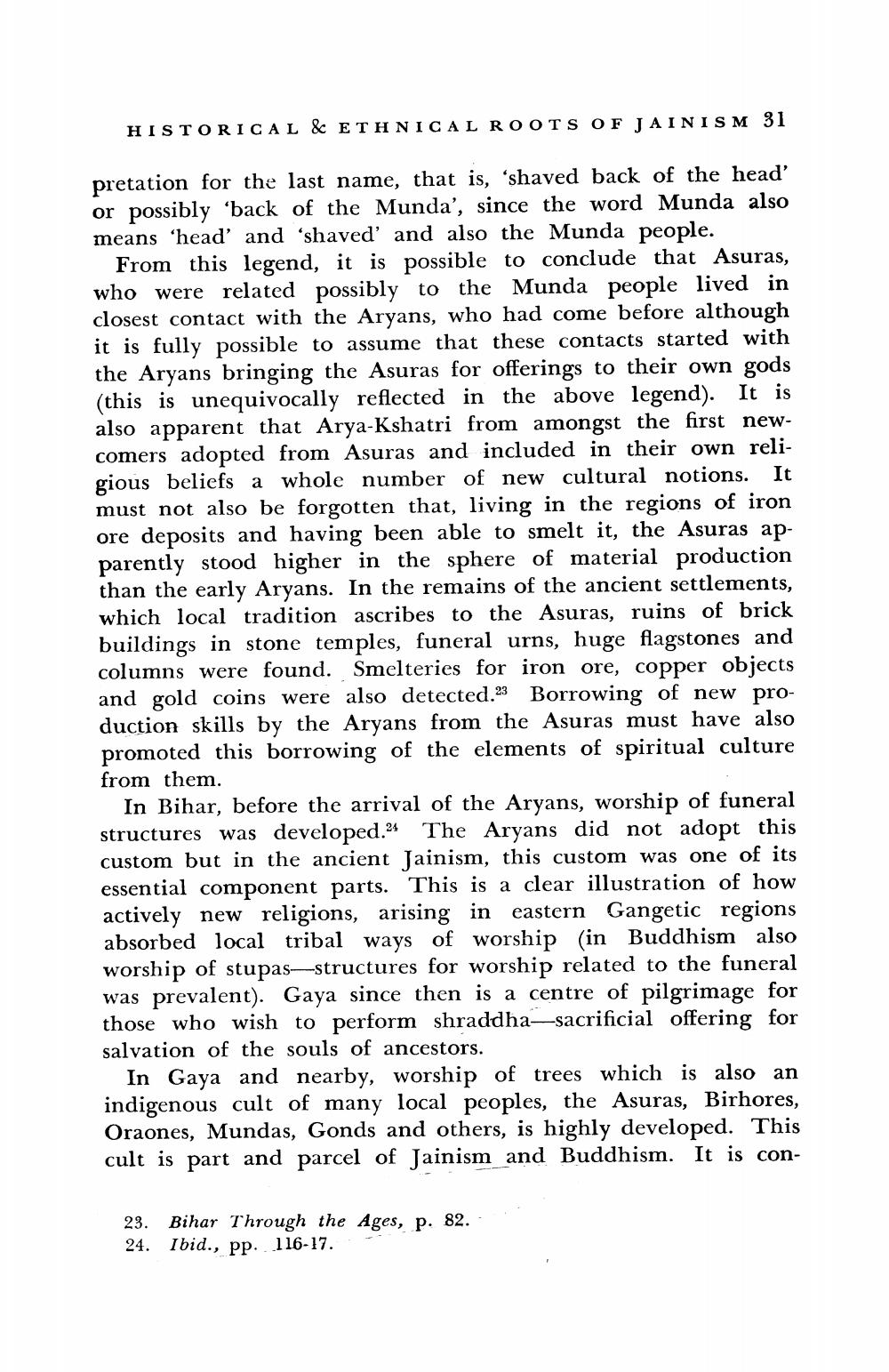________________
HISTORICAL & ETHNICAL ROOTS OF JAINISM 31
pretation for the last name, that is, 'shaved back of the head' or possibly 'back of the Munda', since the word Munda also means 'head' and 'shaved' and also the Munda people.
From this legend, it is possible to conclude that Asuras, who were related possibly to the Munda people lived in closest contact with the Aryans, who had come before although it is fully possible to assume that these contacts started with the Aryans bringing the Asuras for offerings to their own gods (this is unequivocally reflected in the above legend). It is also apparent that Arya-Kshatri from amongst the first newcomers adopted from Asuras and included in their own religious beliefs a whole number of new cultural notions. It must not also be forgotten that, living in the regions of iron ore deposits and having been able to smelt it, the Asuras apparently stood higher in the sphere of material production than the early Aryans. In the remains of the ancient settlements, which local tradition ascribes to the Asuras, ruins of brick buildings in stone temples, funeral urns, huge flagstones and columns were found. Smelteries for iron ore, copper objects and gold coins were also detected.23 Borrowing of new production skills by the Aryans from the Asuras must have also promoted this borrowing of the elements of spiritual culture from them.
In Bihar, before the arrival of the Aryans, worship of funeral structures was developed." The Aryans did not adopt this custom but in the ancient Jainism, this custom was one of its essential component parts. This is a clear illustration of how actively new religions, arising in eastern Gangetic regions absorbed local tribal ways of worship (in Buddhism also worship of stupas-structures for worship related to the funeral was prevalent). Gaya since then is a centre of pilgrimage for those who wish to perform shraddha-sacrificial offering for salvation of the souls of ancestors.
In Gaya and nearby, worship of trees which is also an indigenous cult of many local peoples, the Asuras, Birhores, Oraones, Mundas, Gonds and others, is highly developed. This cult is part and parcel of Jainism and Buddhism. It is con
23. Bihar Through the Ages, p. 82.
24. Ibid., pp. 116-17.




